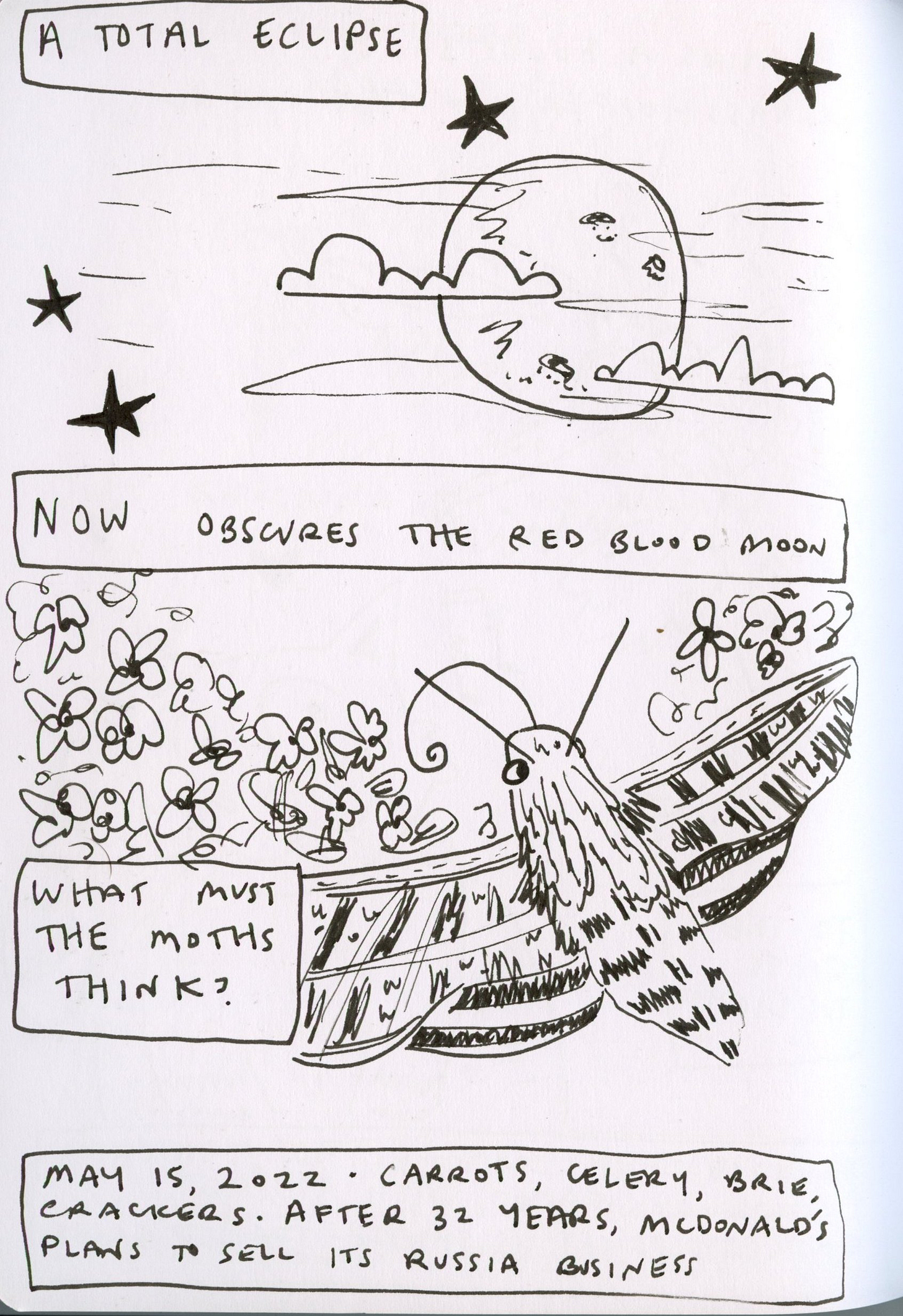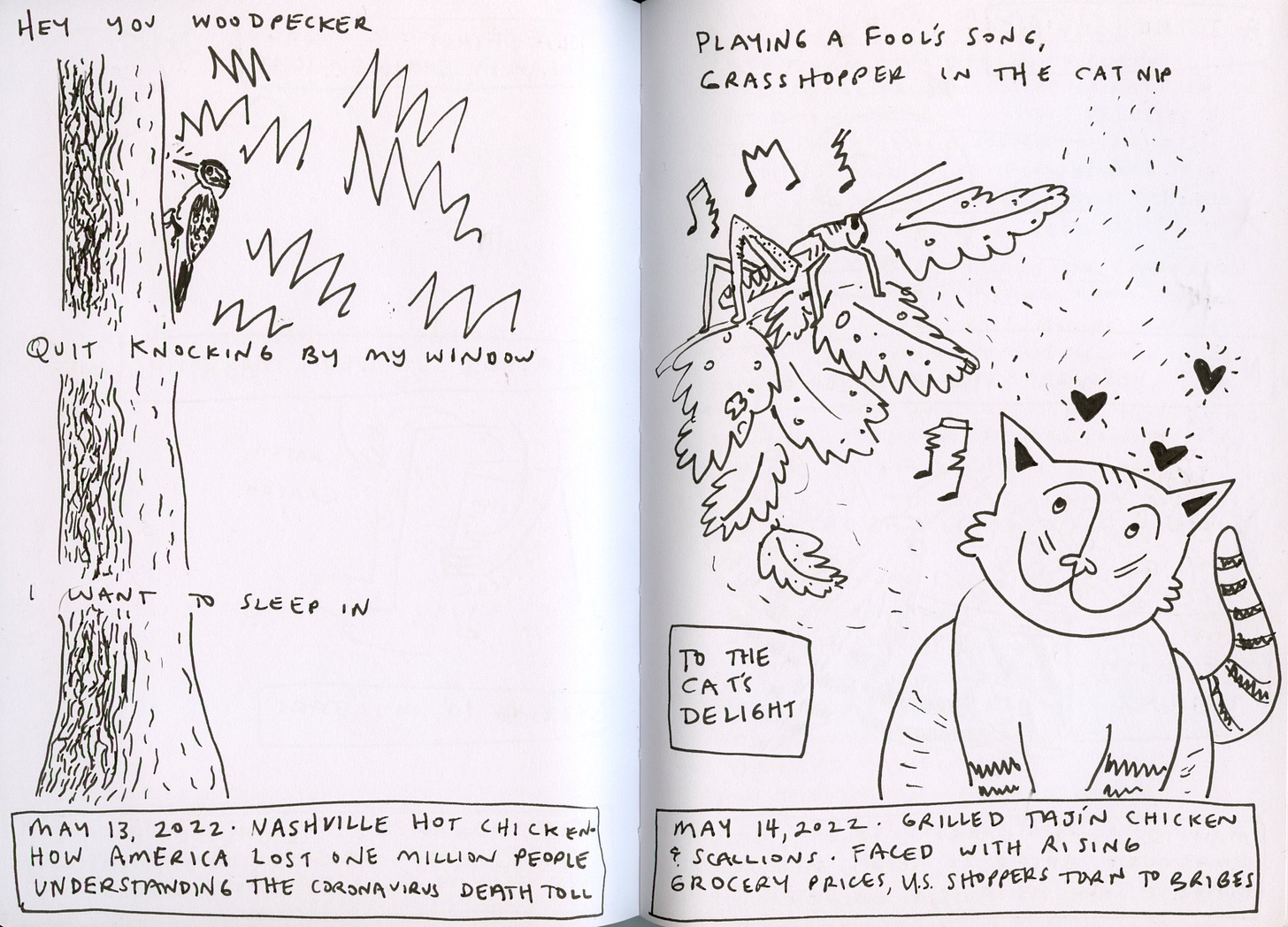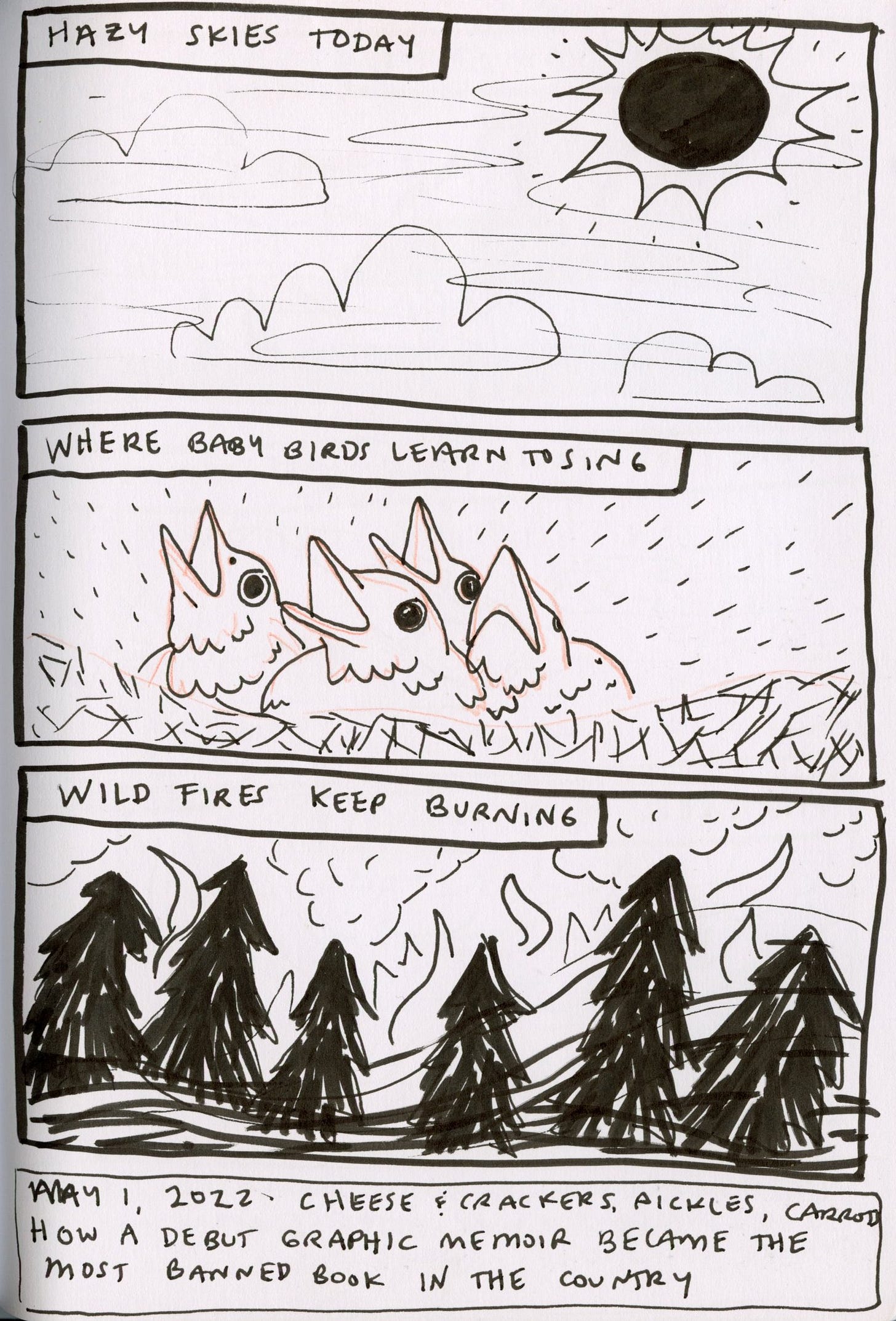Perhaps you’ve been doing a Lynda Barry diary exercise for a while now and need a new prompt to breathe some creativity back into your routine, or maybe you don’t keep a comics diary at all but want a new way to experiment with image and text on the page. I found myself in this predicament at the beginning of the summer, after doing the same modified Barry exercise for nearly a year. My diary practice was stagnating, so I turned to haiku comics.
Haiku are a nice complement to a diary for a couple of reasons: 1. counting syllables while drinking coffee probably helps fend off Alzheimer’s (studies pending), and 2. an indication of the season is important in a haiku. It’s a nice way to practice a deep looking at the environment in your neighborhood or the culture of your town. How might you indicate it’s summer without using the word “summer”? What’s in bloom, what are the people and animals doing, and how might that indicate early, mid, or late summer?
You have probably heard that a haiku is three lines long (perfect for a three-panel entry!) and has a strict syllable count (5-7-5, which some people debate, but will help you from getting too wordy).
I read once that in Japanese poetry, one of the goals of a good poem is to produce a little, peaceful aha moment called a satori, often through jo-ha-kyū: “serene introduction,” then “extended and detailed narrative information, and finally, “an ending which is surprisingly sudden.” Or, literally, “beginning, break, rapid.”
Rather than the Aristotelian beginning, middle, end, maybe there should be, as in the haiku fashion, narrative, image, and suggestion. I remember a quote that says, “Listen to the birdsong, it has a jo, a ha, and a kyū.”
Not only do birds know the greater structure needed to produce a little transcendance, but according to scientific research, they sing the satori while using grammatical rules. According to the article, researchers puzzled finches by playing them ungrammatical remixes of songs, which sounds like they shuffled our equivalent of Subject-Verb-Object. Or a jumbled joke: Lettuce. Who’s there? Knock knock. Lettuce in. Or maybe, the calls started with a sudden ending, moved toward a serene introduction, and ended with narrative information.
I wonder if these little birds also have a sensitivity to the impermanence of things and slight sadness regarding ephemera. Either way, Nora and I are going to spend a portion of our weekends sitting very still, listening to them sing, and drawing some diary haiku.
How to make a haiku diary comic:
Write a haiku about the day. This short poem should be three lines long. The first line should be five syllables; the second, seven; and final, five. See if you can say what season it is without naming the season. Once you feel like you are getting good at it, challenge yourself to create that little “aha moment.”
Draw your haiku. There are any number of ways you can play with the page to layout the panels, the text, the images. Do you want three long panels, a suggestion of panels, some lines to be closer to each other than others? Is a character speaking the lines? Is the haiku a dialogue? Have fun with it!
Links
David Lasky sometimes teaches a multi-week haiku comics workshop. Here is a workshop Lasky ran for SAW’s Friday Night Comics a while back.
Anyone headed out to Comic-Con or the The Autopic Festival in August?







I'm a sucker for haiku comics! I love creating four-panel haiku comics where one of the panels is silent and is used as a counterpoint to one of the other panels. This works well when you have a cutting word at the end of the second line and put a silent third panel in to let the audience think about that before changing course in the third line/fourth panel. I also like using silent panels at the start or end of a four panel series to give context or create a feeling of time flowing/slowing.
Thanks for the exercise ideas!